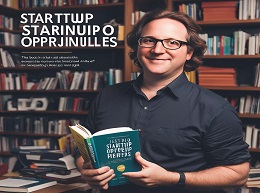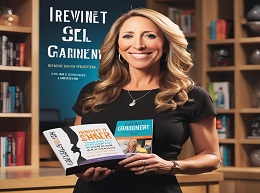Little Bets: How Breakthrough Ideas Emerge from Small Discoveries

Little Bets: How Breakthrough Ideas Emerge from Small Discoveries
Innovation is often seen as a mysterious process, accessible only to a select few with grand visions. However, Peter Sims, in his enlightening book "Little Bets: How Breakthrough Ideas Emerge from Small Discoveries," demystifies innovation by showing that groundbreaking ideas often come from small, experimental steps. This review delves into the key concepts of the book, illustrating how anyone can harness the power of "little bets" to drive creativity and innovation.
The Power of Little Bets
Peter Sims, a former venture capitalist and co-author of "True North," introduces the concept of "little bets" as a method for discovering, developing, and achieving breakthrough ideas. According to Sims, rather than relying on a single grand idea, successful innovators make a series of small, manageable bets. These little bets allow for experimentation, learning, and adaptation, ultimately leading to significant breakthroughs.
Understanding Little Bets
Sims defines little bets as low-risk actions taken to discover, test, and develop new ideas. This approach contrasts with the traditional method of planning and executing a single, large-scale idea, which can be risky and inflexible. By making little bets, individuals and organizations can explore new possibilities without significant upfront investment.
Pixar's Creative Process
One of the most compelling examples Sims provides is the creative process at Pixar. Rather than starting with a fully formed idea, Pixar filmmakers create numerous storyboards and animations, iterating and refining them based on feedback. This iterative process of making little bets has led to some of the most successful and beloved animated films.
The Role of Experiments in Innovation
Experiments are central to the little bets approach. Sims emphasizes that experimentation allows innovators to test assumptions, learn from failures, and refine their ideas. By viewing failures as opportunities for learning rather than setbacks, innovators can continuously improve and adapt their approaches.
Thomas Edison’s Inventions
Thomas Edison, one of history's greatest inventors, exemplified the little bets approach. Edison famously conducted thousands of experiments to develop the electric light bulb. Each failure provided valuable insights, ultimately leading to a successful invention that revolutionized the world.
Cultivating a Mindset of Experimentation
Sims advocates for cultivating a mindset that embraces experimentation and uncertainty. This mindset involves being open to new ideas, willing to take risks, and resilient in the face of failure. By fostering a culture of experimentation, individuals and organizations can create an environment conducive to innovation.
Google’s 20% Time Policy
Google’s 20% time policy, which allows employees to spend 20% of their work time on projects of their choosing, encourages experimentation and innovation. This policy has led to the development of successful products like Gmail and Google Maps, demonstrating the power of giving employees the freedom to explore new ideas.
Redefining Failure
In the context of little bets, failure is not seen as a negative outcome but as an integral part of the learning process. Sims argues that by redefining failure, individuals can overcome the fear of making mistakes and instead view them as opportunities for growth and improvement.
The Development of WD-40
The development of WD-40, a widely used lubricant, involved 39 failed attempts before the 40th formulation succeeded. The name "WD-40" stands for "Water Displacement, 40th formula," highlighting the importance of persistence and learning from failure in the innovation process.
Iteration and Feedback
A key aspect of learning from failure is the iterative process of incorporating feedback and making adjustments. Sims highlights the importance of seeking feedback early and often, using it to refine ideas and approaches continuously.
IDEO’s Prototyping Process
IDEO, a leading design and innovation consultancy, uses rapid prototyping to test and refine ideas. By creating quick, low-fidelity prototypes and gathering feedback, IDEO can iterate and improve designs efficiently. This approach has led to innovative solutions across various industries.
Affordable Loss
One of the principles of little bets is the concept of affordable loss. Rather than risking everything on a single idea, innovators make small investments that they can afford to lose. This approach allows for experimentation without the fear of catastrophic failure.
Lean Startup Methodology
The Lean Startup methodology, popularized by Eric Ries, incorporates the principle of affordable loss. Startups create minimum viable products (MVPs) to test hypotheses with minimal investment, allowing them to pivot or persevere based on feedback and results.
Play and Curiosity
Sims emphasizes the importance of play and curiosity in the little bets approach. By adopting a playful attitude and remaining curious, individuals can explore new possibilities and generate innovative ideas. Play encourages creativity and reduces the fear of failure, making it easier to take risks and experiment.
The Story of 3M’s Post-it Notes
The invention of Post-it Notes at 3M began with a playful experiment. Spencer Silver, a 3M scientist, was trying to develop a super-strong adhesive but instead created a low-tack adhesive. Art Fry, another 3M scientist, used the adhesive to bookmark his hymnal pages, leading to the development of Post-it Notes. This playful experimentation resulted in one of 3M’s most successful products.
Practical Steps for Making Little Bets
Sims provides practical steps for applying the little bets approach in various contexts. These steps include starting small, experimenting with new ideas, seeking feedback, and iterating based on what is learned. By following these steps, individuals can develop a systematic approach to innovation.
Personal Development Projects
Individuals can apply the little bets approach to personal development projects. For instance, someone interested in writing a book might start by writing short blog posts to test ideas and gather feedback. This iterative process can help refine their writing skills and develop a compelling book concept.
Building an Innovative Culture
For organizations, creating a culture that supports little bets is crucial for sustained innovation. This involves encouraging experimentation, rewarding learning from failure, and providing resources for prototyping and testing new ideas.
Atlassian’s ShipIt Days
Atlassian, a software company, holds quarterly "ShipIt Days" where employees work on any project they choose for 24 hours. This initiative fosters a culture of innovation and experimentation, leading to the development of new features and products.
The Transformative Power of Little Bets
"Little Bets: How Breakthrough Ideas Emerge from Small Discoveries" by Peter Sims offers a transformative perspective on innovation. By embracing small, experimental steps, individuals and organizations can unlock their creative potential and achieve significant breakthroughs. Sims’ insights and examples demonstrate that anyone, regardless of their background or resources, can make little bets and drive meaningful innovation.
Whether you are an entrepreneur, a professional, or someone looking to bring more creativity into your life, "Little Bets" provides a practical and inspiring guide to navigating the uncertain path of innovation. By making little bets, you can discover new opportunities, learn from failures, and ultimately, achieve your greatest breakthroughs.













